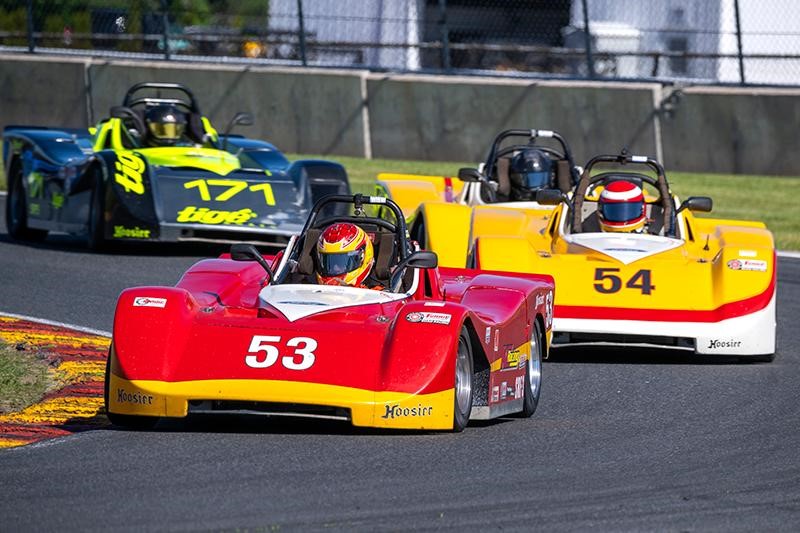Race Ready: The Art of Keeping Racecars in Peak Condition
A racecar, its driver, and its crew are interconnected systems that can guarantee the success of the racing season.
No racecar driver could win without a high-quality vehicle and a quick-thinking mechanic crew before, during, and after races. How do racecars withstand all the pressure and damage during a race? How do racecar drivers stay as safe as possible? How do racecars continue to look brand-new after several races?
Performance
The most crucial aspect of any racecar is its performance. Suppose a racecar is not regularly repaired before, during, and after a race. In that case, it can not only have devastating effects on the race’s outcome but also severely hurt or even kill people on the track. Every part of a racecar is important and undergoes regular maintenance, but these are the main aspects mechanics and pit technicians look out for.
Wheels and Tires
Tires are the front and center of a vehicle’s performance. Tires and wheels can quickly become misaligned or damaged in the middle of a race, especially when drag takes effect. Racecar wheels and tires are highly susceptible to damage due to performance, leading to breaks or bends. Blowouts can be very likely at high speeds, so pit crews are immediately on the move to inspect for even the most minute wheel and tire damage. They typically will replace a racecar’s tires immediately. Tire pressure is also significant. Insufficient or excess air in tires can lead to deadly damage.
Suspension
A racecar’s suspension absorbs most of the impact during the race; it connects the wheels to the rest of the vehicle and must be properly cleaned, lubricated, and free of cracks or breaks. Bearings, gears, and ball joints also need proper cleaning, lubrication, and replacement when the race gets too rough.
Brakes
The racecar’s brakes can be the difference between life and death out on the track. Most people assume brakes aren’t used much during the race, but they prevent accidents, mitigate accident damage, help racers take curves more easily, and much more. Brakes can wear down significantly during a race. Extreme braking can lead to significant vehicle damage due to increased temperature, so mechanics must inspect all parts of the brakes for weaknesses. Brake fluid must be regularly topped off, and piston seals need regular replacement. Often, excess fluid will need to be drained to reduce damage from moisture.
Drag
Most racecars are equipped with systems that reduce drag to increase top speed. If these drag systems wear down or stop working, it can lower a racer’s top speed, causing them to lose a position or even the entire race. While the drag system is not always active, it must be regularly inspected, tested, and repaired to ensure it is usable when the driver needs it most.
Pitstops
Most people know that racecar drivers use pitstops to repair their vehicles mid-race. These stops are essential for everyone’s safety and the longevity of the vehicle. Pitstop crews are trained to repair a car’s issues in mere seconds, allowing the vehicle to return to the race as quickly and safely as possible. Without pitstops and their crews, motorsports would be much deadlier and more difficult to win.
Engine
The engine gives a racecar its power and takes a lot of wear during a race. Engine repair and maintenance have many aspects. Repair crews must inspect belts, seals, hoses, gaskets, lubrication, grime, oil, and the overall engine. If any of these parts wear, break, or go awry, it can instantly end a driver’s racing season.
Engine Oil
The engine oil keeps the engine working well; it prevents internal damage from grinding and excess wear through lubrication. Racecars will need more frequent oil changes due to the frequency and intensity of driving habits.
Related Article: How to Transform a Street Vehicle Into a Race Car
Appearance
Outside of a racecar’s performance, its appearance is also essential. Many motorsports enthusiasts recognize vehicles by their color, shape, and decals alone. Racers take pride in their vehicles, and races can cause a lot of damage to a car’s appearance, even without an accident. Racecars and their teams maintain a car’s beautiful exterior in a few ways.
Paint Protection
Many racecars are equipped with paint protection to avoid excess damage to the frame and paint job. Paint protection film won’t prevent significant exterior damage in racing accidents, but it can prevent those everyday buffs and scratches that usually do much more visual damage.
Frame Repairs
The car’s frame often takes the brunt of the damage and wear in a race. It’s essential before, during, and after every race that vehicle frames are heavily inspected, including any bolts and screws, to avoid performance issues and aesthetic problems.
Heavy-Duty Cleaning
Racecars often encounter dirt, grime, and debris due to the roads, accidents, and high speeds. Dirt during a race is to be expected, but if grime builds up on a car, it can lead to rust and other internal damage. After every race, a car must be thoroughly detailed and washed to prevent the buildup of hazardous, corrosive materials.
Conclusion
There are many aspects to keeping a racecar in peak performance and condition. Racing a car goes far beyond driving the vehicle; the team behind maintenance, replacements, and repairs also keeps a racing season successful. Racecars take a lot more wear and tear than an average vehicle and must undergo many more inspections and repairs to the engine, wheels, tires, suspension, and more. Racecars keep their cars looking new with paint protection, frame repairs, and intense cleaning routines.
